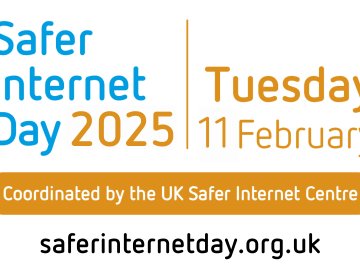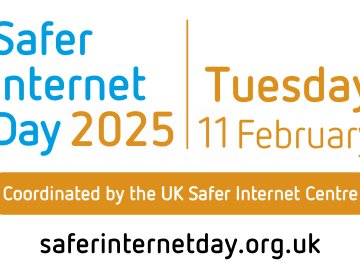We see ourselves living in an ‘online’ world, surrounded by devices, constantly interacting, socialising and communicating with ease on a daily basis. It’s quite amazing really, particularly when you look back and see how things used to be. It’s fair to say that gaming has changed and adapted rapidly, across the modern era.
The way technology has evolved through the years just comes to show how far we have come in quite a short space of time. Online safety has in itself changed and developed as well, growing alongside us as we go along, becoming more and more essential as new concepts and ideas come into play.
Gaming is a great example of how entertainment has evolved, initially starting as a fairly individual concept but expanding into a world-wide place to interact and socialise with others. Not only that, but online safety has played a significant part throughout its ongoing development as well. So with this year’s Safer Internet Day theme being all about gaming, we’re jumping into this huge topic over the next few weeks. For now though, let’s go back to the beginning.
Humble Beginnings – The Start of Gaming Safety
It’s difficult to believe that gaming has been around for about 50 years, starting with very basic games that were nevertheless seen as revolutionary at the time (remember pong?). As the years went by, home consoles such as the Atari and Intellivision were hugely popular (yes, there were console wars back then as well). Not only that, but children and young people were sinking all their pocket money into arcade cabinets. It was entertainment that hadn’t been experienced before.
During this time, play was often limited to one or two players but still created a new environment allowing players to socialise with like-minded people. It sparked a drive to compete against others and beat their high scores. Even in the 1980s, there were highly publicised gaming tournaments for people to enter which offered exceptional cash prizes (in that aspect, things haven’t changed too much).
When the home console became more popular through the 80s and early 90s, safety quickly became a factor that needed to be considered more. Games were getting more mature and started to include content that wasn’t appropriate for younger audiences. In 1994, the ‘VSC was asked to administer an advisory rating system for video games’ alongside another regulator, the BBFC (British Board of Film Classification) that was also formally rating video games as well as the film industry. This became the ELSPA ratings system which would later go on to become PEGI which is still being used today.
Back then, children would struggle to purchase inappropriate games in shops if they didn’t look the right age. In most instances, it was down to the parents to purchase games and make the important decisions of whether their children were mature enough to play it. Online purchasing and socialising had yet to become a thing, so one of the primary safety concerns was whether a child got hold of a game that was too old for them.
In 2003 the age ratings by PEGI, became legally enforceable, setting out ratings from 3,7,12,16 and 18. Unlike other forms of media, the age ratings are much broader, most likely to accommodate the vast amount of content that gaming offers. PEGI also included themes the game explored such as whether it contained violence or bad language to show players what could be considered harmful. In the late 90s and early 2000’s though something even more revolutionary came about.
Playing Online with Other People
With the rise in popularity of mobile gaming, PC gaming and the launch of consoles such as the Playstation 2 and Xbox, online play quickly became a new way to interact. Although online play was experimented with, it didn’t become the ground-breaking phenomenon until games such as World of Warcraft and subscriptions such as Xbox Live were released. It allowed users to not only play together but to communicate through headsets in an accessible and easy manner. Friends could meet up and complete various quests together and compete in leader boards. It was in itself, pretty incredible.
But with more freedom to interact, came more considerations around risk of harm. Players were now able to connect with friends but also with people they hadn’t met before. Not only that, but this new method of communication allowed players to say whatever they wanted to other players. In many incidences it led to building friendships and even relationships but unfortunately also extended towards the spread of hate speech, other forms of bullying, grooming and even radicalisation.
There was a need to put more appropriate measures in place to ensure players could stop communications with those who were causing harm. Implementations of ‘blocking’ and ‘mute’ buttons were introduced which have extended towards ‘reporting’ buttons and other types of security features that we see today. With the exploding popularity and high entertainment value, there was also screen time concerns and a risk of gamers developing addictions which could lead to health concerns, physically and mentally. Needless to say, there were a lot more considerations that were coming into play.
Giving More Freedom to Players
Gaming became even more accessible with the introduction of online stores and in game purchasing. Suddenly, children didn’t have to compete with buying a game in a shop, it was available online and ready to download. Age restrictions were becoming easy to bypass, meaning the risk of a child experiencing inappropriate content became more of a concern. With parents starting to include payment details on accounts as well, there was the worry of children controlling online spending, sometimes without the parent’s knowledge.
As well as this, games began to include ‘micro-transactions’ which were small payments in game that gave players additional items. As many transactions were available at the press of a button, it was very easy for children to purchase with real money. Micro transactions also started to be used as a form of gambling, giving player’s the opportunity to purchase mystery items or ‘loot boxes’ that gave them varying items of quality through randomisation. With the rising concern of how these affected children and their families, PEGI introduced Loot Box warnings on games.
With these new areas of risk being opened, security features such as parental controls became more essential. Consoles incorporated a variety of features that gave more control back to the adults in terms of how accounts were managed for their child. Through later years, parents were needed to take a more active role in their child’s gaming experience, being encouraged to share in the activity more and see what fun could be had whilst being aware of potential risk and at hand to support if problems arose.
Where We Are Today
It may seem a lot, but we have only dipped our toe into the breadth and scale of gaming. For Safer Internet Day, we’ll be taking a much closer look at some of these topics and explore how you can best be aware of what gaming offers and how you can best navigate the platform with children and young people.
It is important to note, that currently, gaming is the leading entertainment industry in the world. We’ve come a long way from two paddles batting a ball back and forth but no doubt, it will continue to grow! To keep up to date on this topic, make sure you keep an eye on our topic page which will be full of more insights into gaming, interactive relationships, safety considerations and much more!






